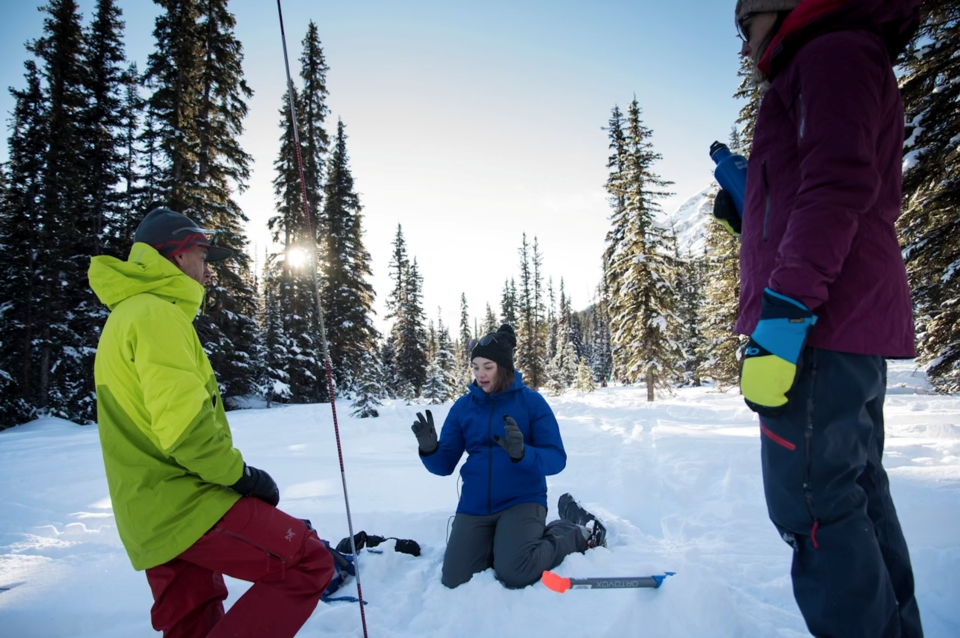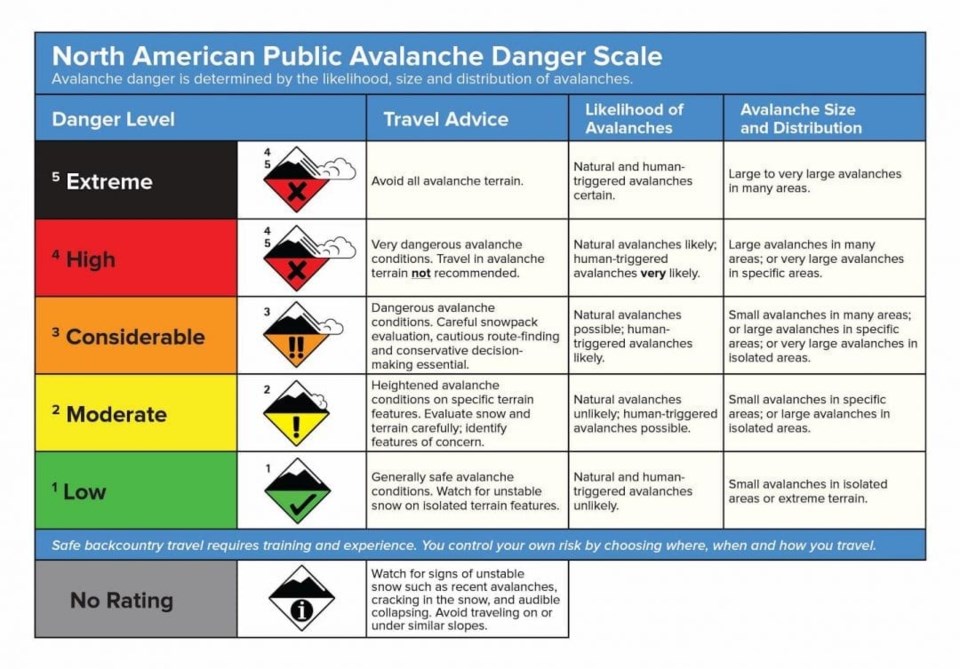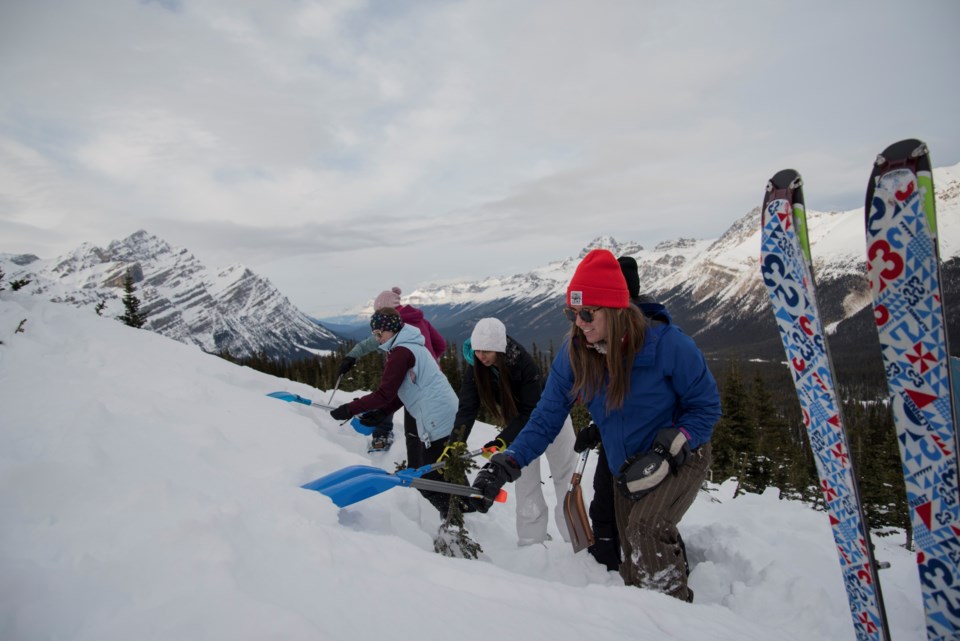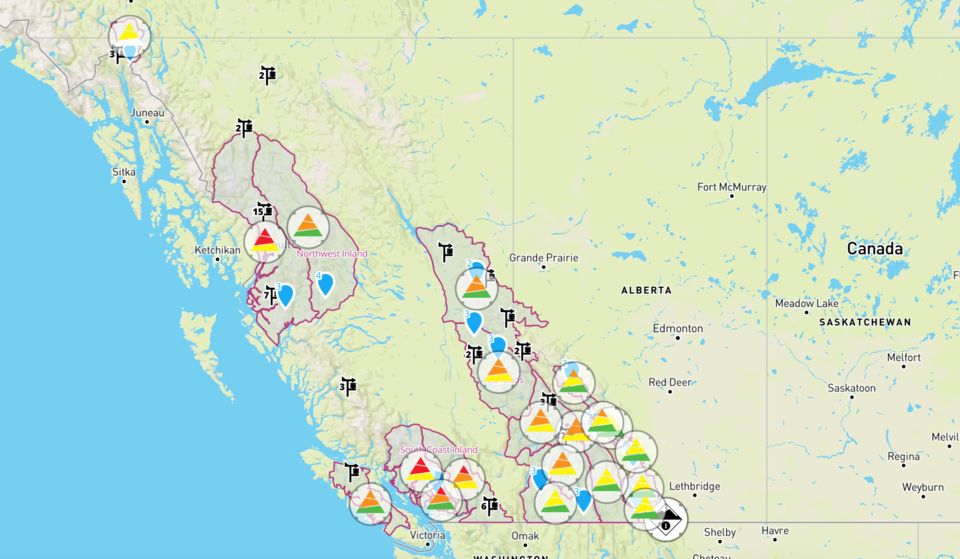The avalanche bulletin is a publicly accessible avalanche hazard forecast developed by avalanche professionals that serves as a hazard communication tool for the general public to make informed decisions when going into avalanche terrain.
Each area in much of the accessible areas in Western Canada has its own daily rating based on the five danger ratings and information about the problems in the snowpack.
The bulletins started after demand from the general public who wanted to know more about what avalanche professionals were seeing out in the field. Until then, the only similar tool was the InfoEx, an information sharing product that was used by avalanche professionals to report – not forecast – avalanche activities. This vehicle was and is still used by professionals to create the bulletins.
“The InfoEx was absolutely critical,” says Clair Israelson.

Israelson, an Association of Canadian Mountain Guides (ACMG) mountain guide who worked for Parks Canada for 26 years from 1970-97 and became the executive director of the Canadian Avalanche Association (CAA) in 2001. The organization led the charge to create Avalanche Canada, which puts out the bulletins.
“It (the InfoEx) was the result of a coroner's inquiry into a heli-ski avalanche accident back in the seventies. The coroner recommended that the industry should develop a way to share information between operations. Up to that point in time, there was no mechanism, no structure for sharing information. It was a cooperative venture operated by the avalanche association because it covered the entire spectrum of the avalanche community.”
The industry had to wait until the fax machine became widely used before the InfoEx could really get started. In the beginning, it was a rather time-consuming process, however, it was imperative for what is in place now.
“When it was the fax product, all these operations would fax their information to the avalanche centre at the end of the day and there was a poor clerk who had to sit there at night and collate all of it then put it together in one big fax message and fax it out in time for people to pick it up in the morning the next day,” says Israelson.
“After the fax machine came the first fragile start of the internet, so people could use the internet to share information and that made the InfoEx even stronger. It grew and grew and became a very important tool for all these public and private operators that were in the avalanche business in western Canada.
“Without the InfoEx, there's absolutely no way that the Avalanche Association would ever have been able to start doing a bulletin,” continues Israelson. “The InfoEx is a retrospective of what has happened in the past 24 hours, but it's not a forecast. The value added with the avalanche bulletins is that forecasters take the InfoEx and other information they gather, then based on what the industry operators are reporting on, they forecast into the future 24 hours further out. And so the bulletins or the avalanche forecasts are a much more useful tool for the backcountry user.”

The five ratings that the avalanche bulletin uses to convey the danger were developed through the International Commission for Alpine Rescue (ICAR) and were adopted by Canada when they began making the bulletins. There are different parts of the rating to understand from the nature of the avalanche problems, travel advice, likelihood of avalanches and avalanche size & distribution. These ratings (low, moderate, considerable, high and extreme) give backcountry users a general idea of what to expect.
“There was definitely a public education campaign that went on when that started being adopted. And the first bulletins were actually done by Parks,” says Israelson. “At the time, the emphasis wasn't really on understanding the danger ratings themselves, so much as just trying to get a bulletin out that was pretty basic. It was just plain text, no fancy graphics or icons or anything – that was all developed later.”

Now the avalanche bulletin is a robust tool that offers a great deal of information from the forecasters, but also weather conditions, terrain ratings, maps.
The ratings, coupled with all the other inputs within the bulletin, help backcountry users inform their decisions.
The Mountain Information Network, often referred to as the MIN, is a newer tool on the bulletin that allows users to report on observations they have in the backcountry and has added a whole other understanding of avalanche awareness and comprehension of snowpack – something that was always part of the plan.
“It's a cultural shift to a mountain safety culture,” says Israelson. “I remember years ago when the CAA was in its infancy, telling a colleague that we will have achieved our goal when we see and hear an avalanche report, bulletins, forecasts and warnings commonly on the radio, television and in print. And that certainly has happened. I think the whole program by Avalanche Canada and Parks Canada are world leaders now. That's an amazing evolution in less than 20 years.”




